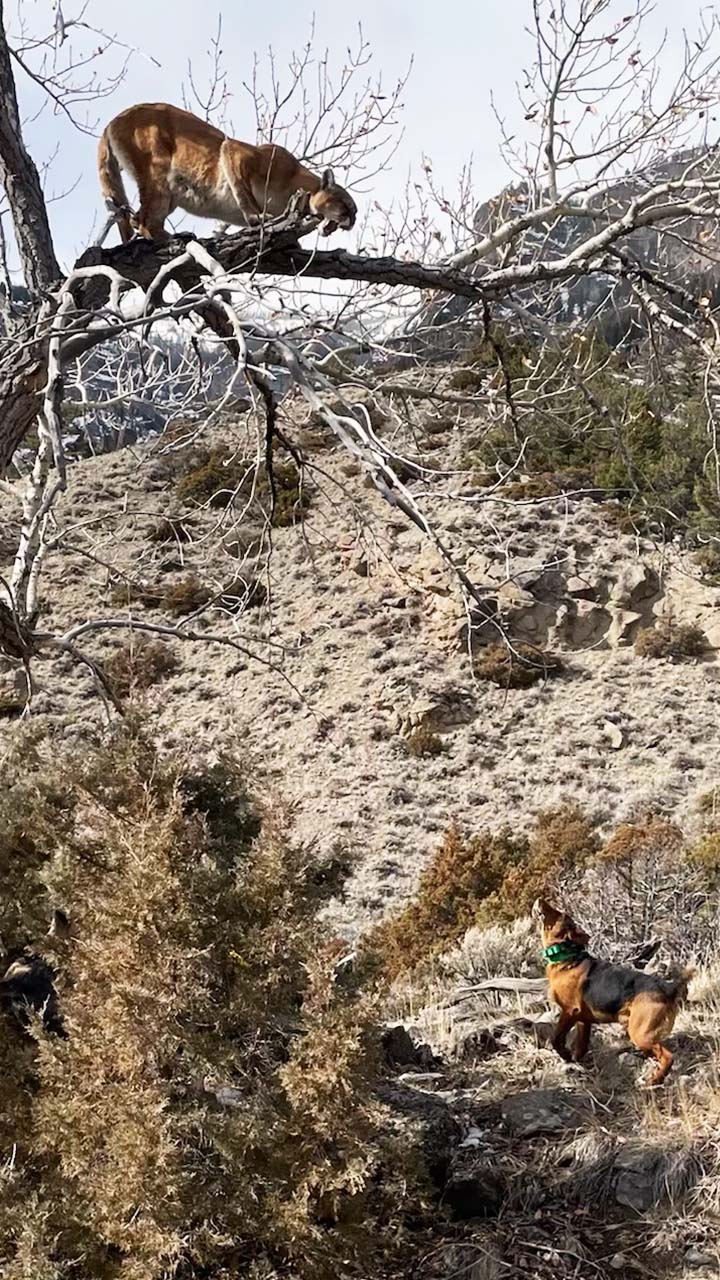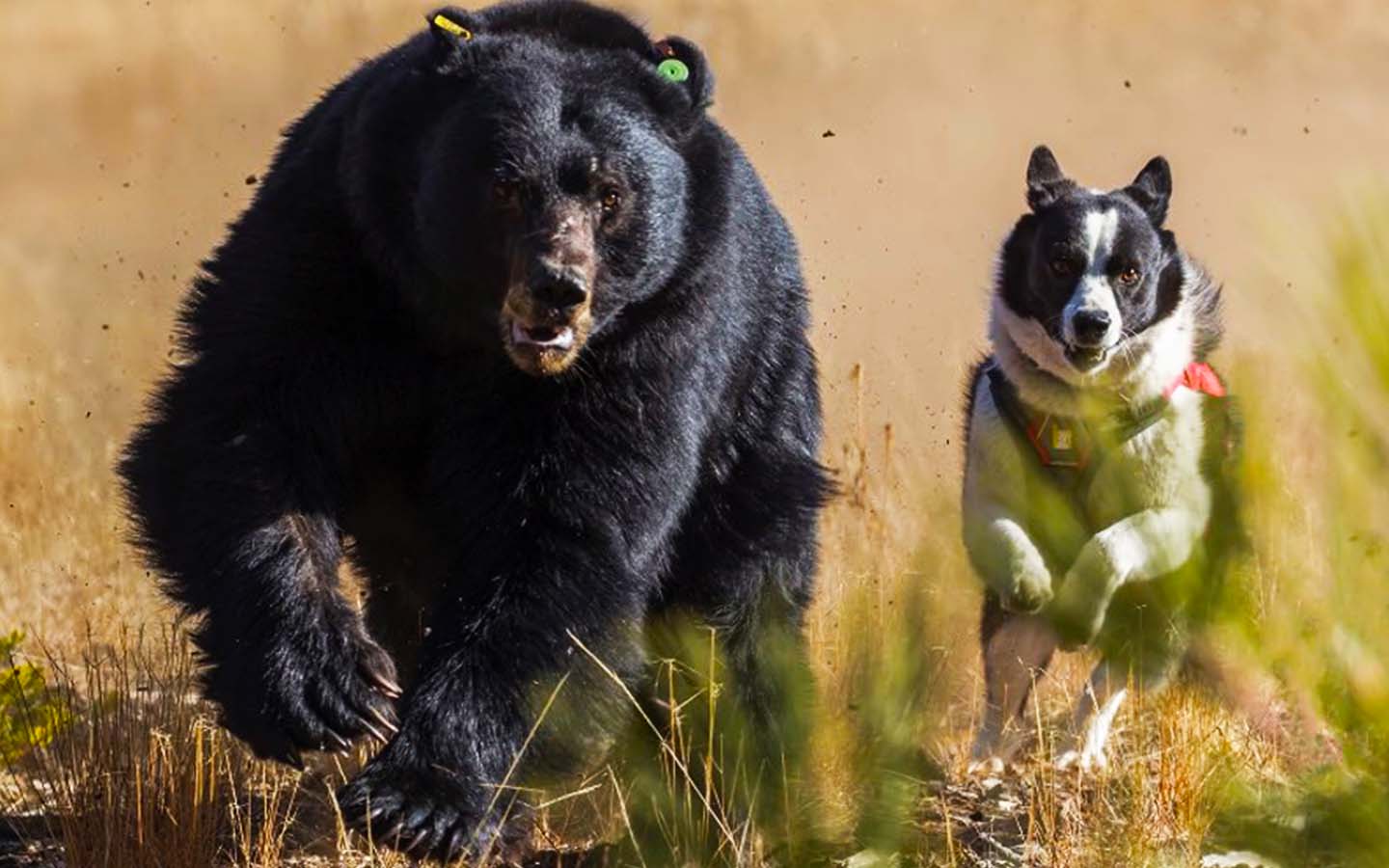Guard and pursuit dogs for ranching in lion, bear and wolf country
Airedale terriers and Karelian Bear Dogs (KBDs) are used by landowners and conflict reduction dog-handling specialists as guard and pursuit dogs to protect human safety and pursue wildlife. Pursuit dogs can be used for hunting or treeing predators, but in most ranch use cases, pursuit is called off after the predator has been driven away.
Airedale Terriers
Greg Hertel, the manager of Ishawooa Mesa Ranch located in the storied South-Fork of the Shoshone, Wyoming has been working with Airedale terriers since the 1980s. As a commercial fisherman in Alaska, the trusty breed served Hertel as a deckhand of sorts and also ran by his side to tree and trap mountain lions for the Fish and Wildlife Service in the ’90s. Now, Hertel uses the versatile black and tan 80-pound breed as a safety-net while hunting in dense grizzly bear country, and to protect the many broiler chickens, small livestock and cattle close to the ranch house.

“Stitch sleeps on the front porch. You know, these dogs are out all night long, which I can’t really do myself. They know to run off any bears” said Hertel, with Stitch, his two-year-old Airedale terrier sitting calmly by his side. “They’re not bad stock dogs either”, added Greg, as Stitch will accompany him to ride their allotment as well. Originally bred as all around hunting and working farm dogs in England, the Airedale terrier continues to be used by landowners in the West as a utility tool of sorts for protecting farmsteads and human safety in areas with dense grizzly populations.
Karelian Bear Dogs (KBDs)
Traditionally used as bear and moose hunting dogs in Finnish Lapland, Karelian Bear Dogs’ ursine-keen breeding make them an effective tool for hazing and holding grizzly bears. “Brutus was three months old the first time he worked a bear,” said Kristen Kipp, a livestock producer on the Blackfoot reservation who attended the meeting with a litter of puppies tailed by Brutus the stately KBD. “These dogs work best in teams. One will usually engage and the other will stay with family. If they feel there is less of a threat to people, then they will both engage.”
KBDs will engage grizzly or black bears and bark or “bay” to flush them from cover or hold them in a location while keeping a safe distance. “KBDs don’t hunt with you, they hunt for you,” said Carrie Hunt, founder of the Wind River Bear Institute, who has worked with KBDs for 30 years. Hunt travels the world using her expertly handled KBDs to “train” bears to build negative associations with attractants such as front-country camps and calving pens.
Aversive conditioning is the process of associating a negative consequence with depredation or other undesirable behaviors. Hunt and the other handlers at the Wind River Bear institute combine knowledge of bear behavior with aversive conditioning using KBDs and other practices such as rubber bullets as ways to change bear behavior and “train” bears to keep them from associating humans or livestock with food. “Dogs help bridge between the idea that we can simply live alongside bears and that we can actively train bears to stay out of trouble,” said Hunt.
Bringing Them Home
In addition to their bear and mountain lion chasing prowess, KBDs and Airedale terriers are good family dogs, making them well suited to support smaller ranching and farming operations that need an all-purpose utility dog to protect human safety and livestock around the farmstead. You can learn more about how landowners use Airedale terriers and KBDs to reduce conflict in WLA’s Conflict Reduction Guide. If you are looking to take a deep dive into all things Airedale terriers or find good breeders, you can sign up for the traditional Airedales message board or follow hunting Airedales on Instagram. Further, The Wind River Bear Institute has a KBD puppy placement program available for those of you keen to take an expertly bear-bred guard and pursuit dog home (with some human training involved!).





